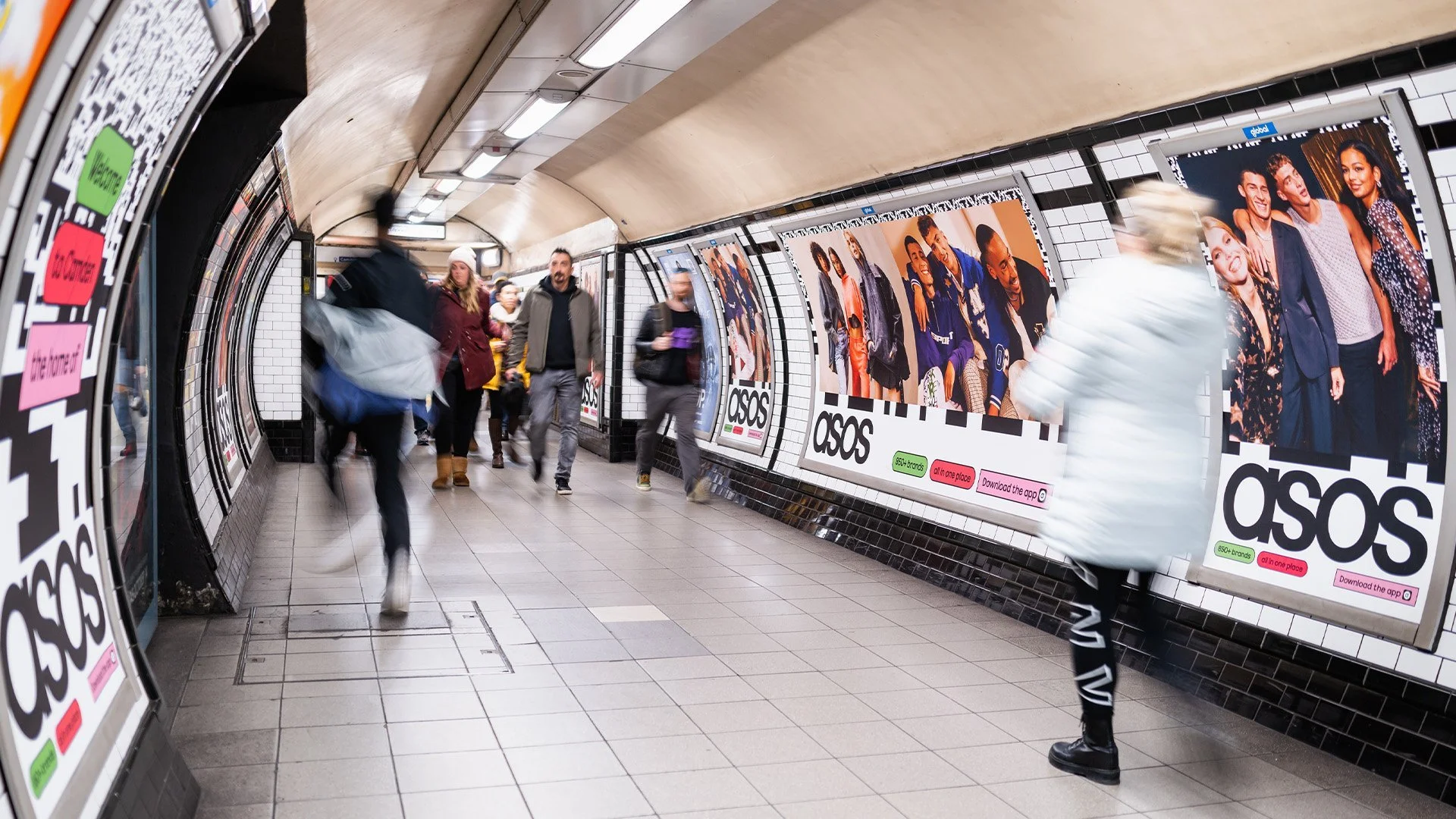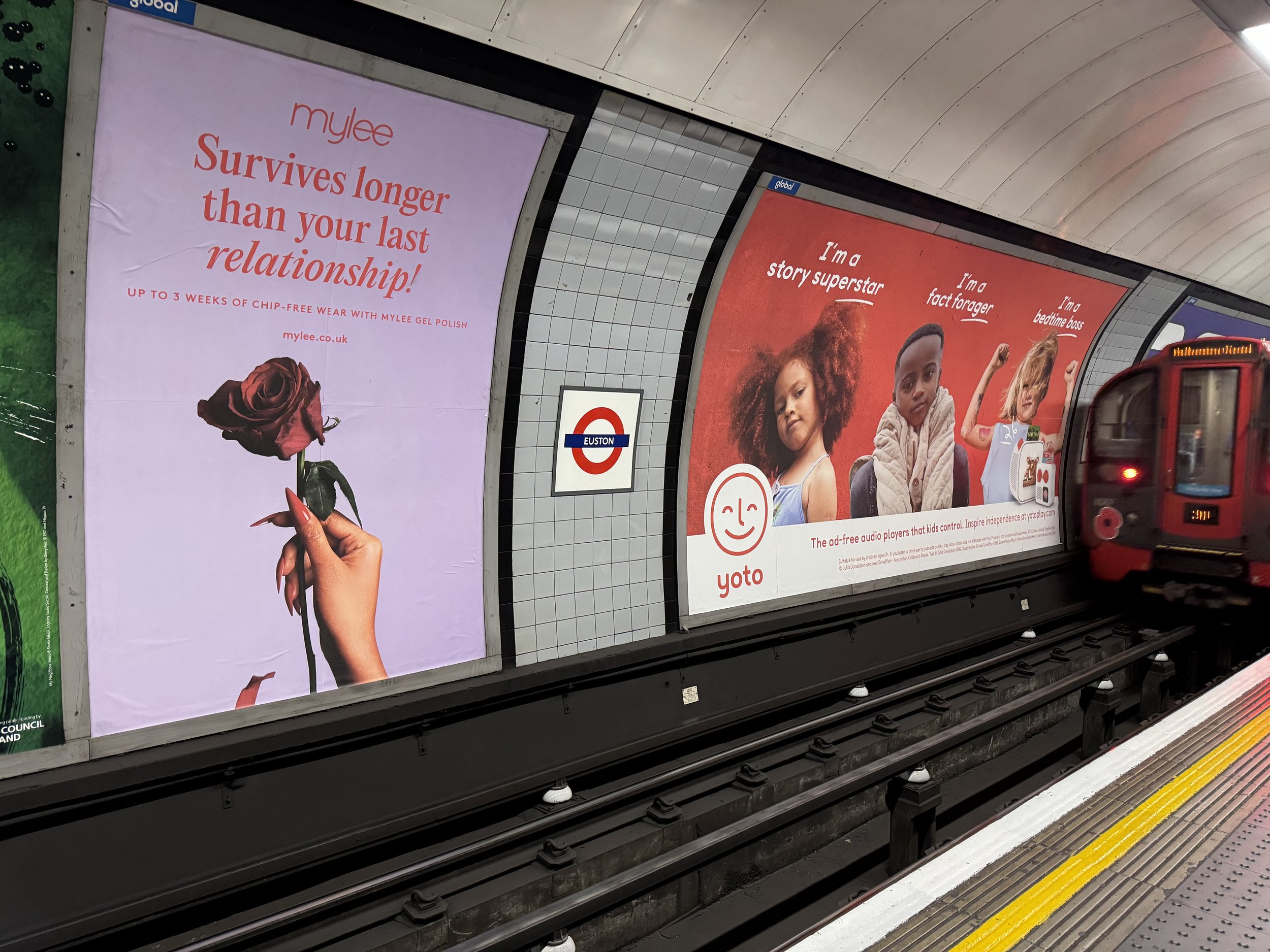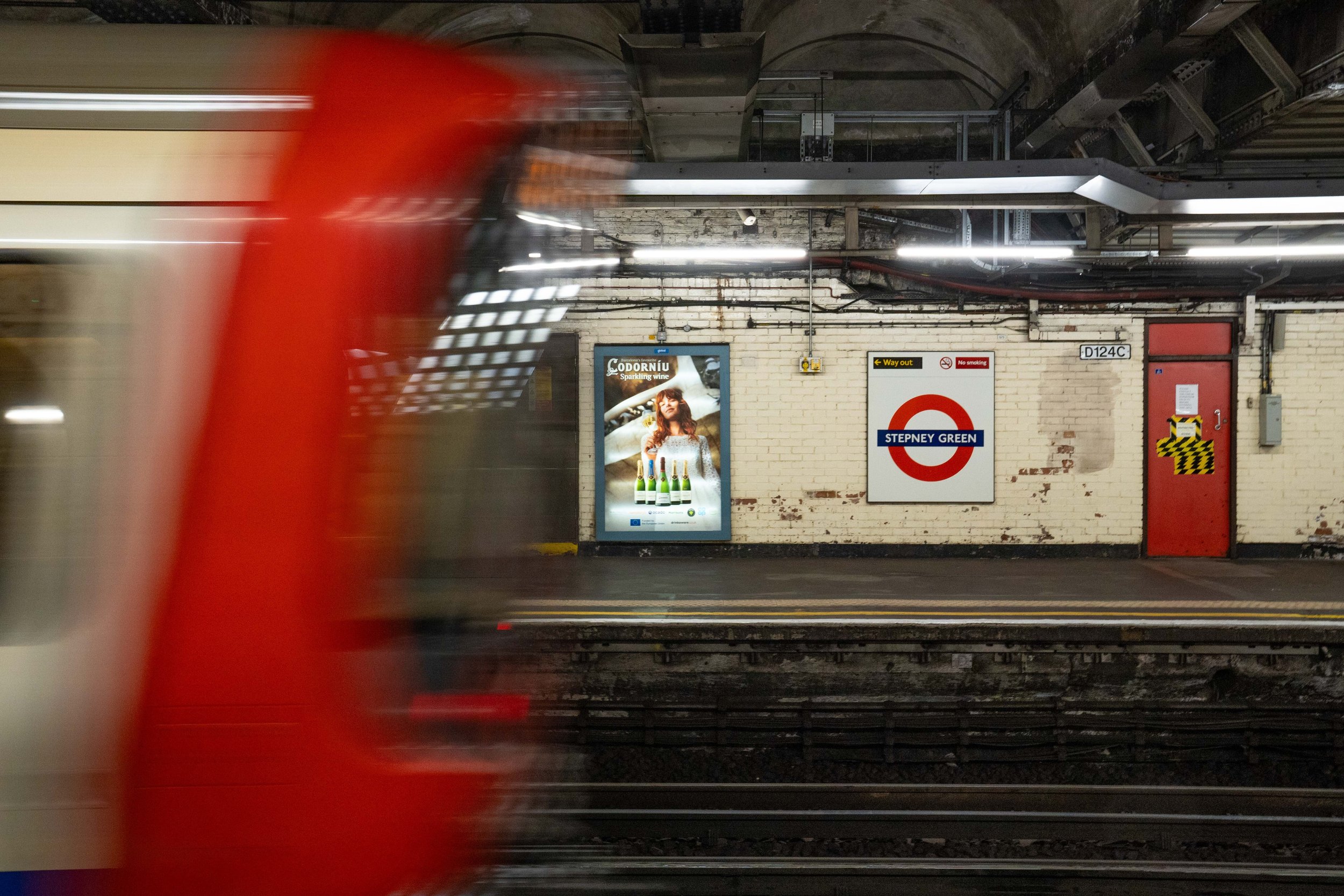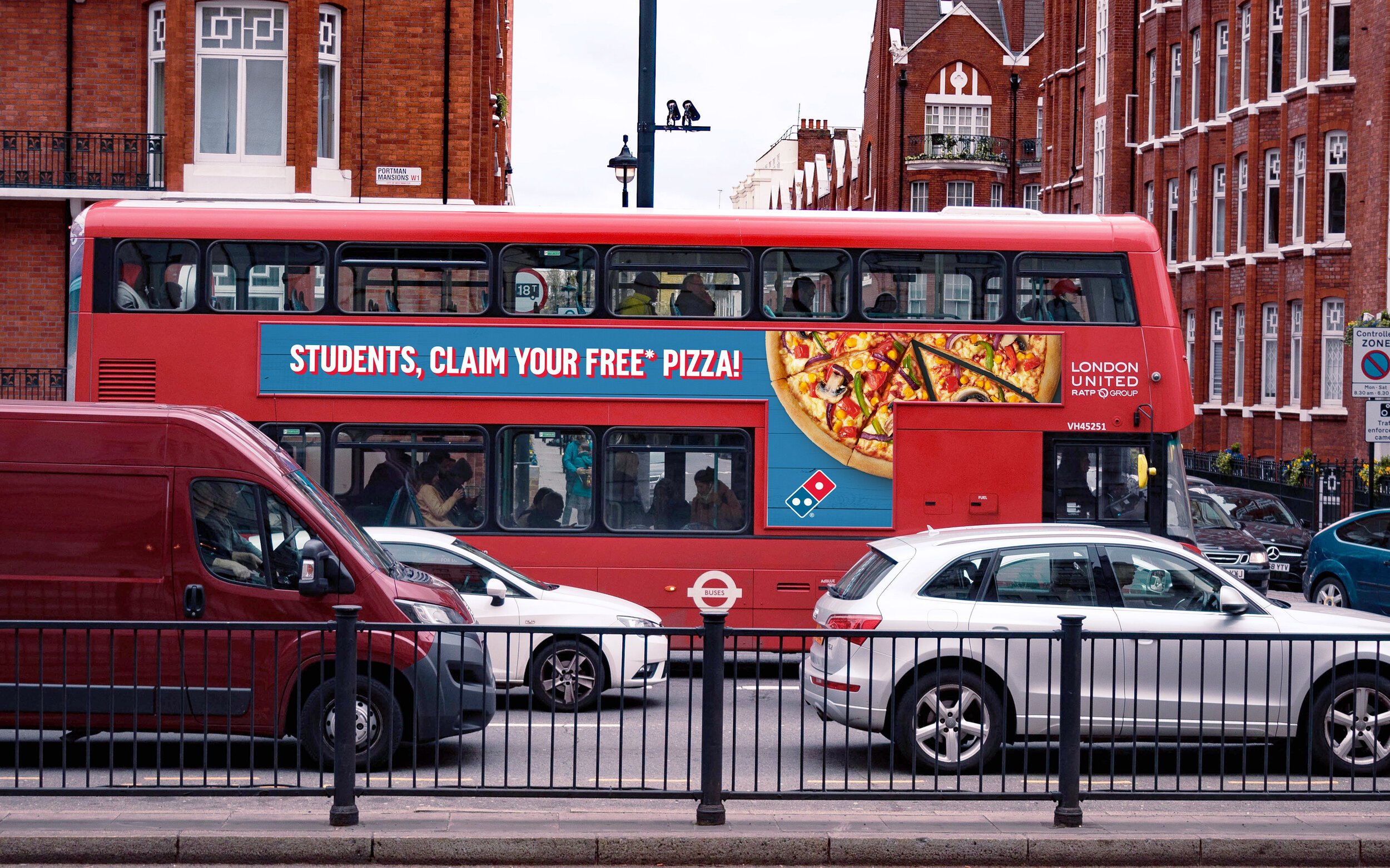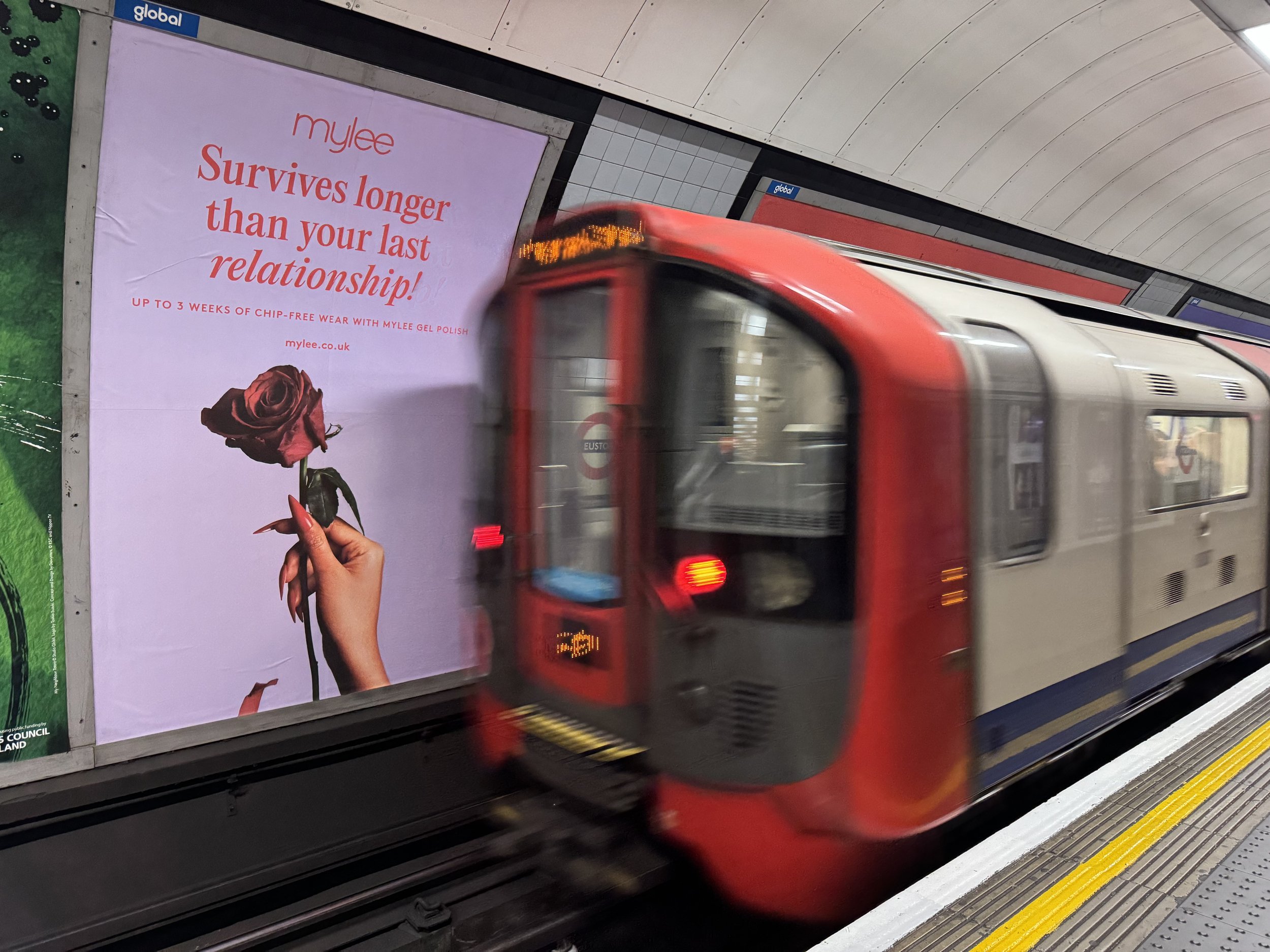The top reasons why London Underground advertising and tube adverts are powerful for any brand, big or small.
Example of Tube Adverts in the London Underground.
Key Takeaways
The London Underground hosts nearly four million commuters each day, giving tube adverts enormous scale; a single poster can be seen by tens of thousands of people over a typical two‑week campaign.
Frequency is high because commuters travel twice daily and see the same adverts repeatedly; this repetition enhances memory and brand recall, making tube advertising as effective as TV for reach.
Tube advertising is highly targetable: brands can choose specific formats and locations such as car panels, escalator panels, cross‑track ads, digital ribbons and gateways to reach audiences like tourists, students or business travellers; dwell time and new mobile connectivity allow call‑to‑actions and scanning, and costs can be surprisingly low.
Transport for Greater London, or TfL, and its network of the London Underground is the most unique environment for advertising in the whole UK for a few important reasons and this is what we’ll be sharing with you in this article.
Scale
Every single day, on average, the London Underground has nearly 4 million commuters. This is exceptionally high and the main reason why tube advertising is so effective. A single poster or billboard can be seen by tens of thousands per day for the duration of the media buy which is usually 2 weeks. No other media placement and environment has such big visibility except for TV advertising.
Frequency
Frequency, in advertising, is the most important metric when buying media, hands down. Frequency, simply put, is the number of times that a single person, or commuter in this case, sees the tube advert in question. This is important because of our short-term memory and how it works. For a consumer to remember and recall an advertisement or brand, they need to see it, according to studies, on average 6 to 8 times during a week.
The London Underground, since most of its 4 million daily passengers are daily commuters and users, they will commute and use the Underground at least twice a day travelling between home and the workplace. As mentioned above in “Scale”, tube advertising is usually purchased in 2 week slots. So, your potential customer will see your ad with a very high frequency per week thus more likely to recall your brand and advertisement at the time of purchase or engagement with your business.
Targetability
Tube advertising has plenty of flexibility. Brands, media planners and marketers can select different formats such as Tube Car Panels, Escalator Panels, Paper Cross Tracks raging in sizes, Digital 6-sheets and more. But, more importantly, we can pick specific stations, specific escalators or even specific platforms. The London Underground has a broad audience so its targetability allows brands to zoom in on their desired audiences. For example, a busy Euston Station will be the focal point for tourists and business travellers whereas others will be indexed higher with university students or even theatre lovers.
Audience
Even though the TfL’s London Underground has a very broad audience, there are key audiences that can be targeted with a good degree of precision, these are students, tourists, high-net-worth individuals, business travellers, white and blue-collar workers, event-specific audiences, venue-specific audiences and lots more.
Tube Adverts
On top of the huge reach viewed by tens of thousands, frequency, and the below types of tube adverts, another important aspect of some of the formats is their high dwell time. On average a passenger spends 20 minutes travelling inside the London Underground train meaning it has plenty of time to assimilate and read ads. We’re talking about Tube Car Panel adverts.
Located inside the TfL trains, these compact paper strips are one of the most cost-effective options for all the London Underground advertising options. They have the biggest dwell time.
Paper and Digital Escalator Panels
These small portrait paper posters are found on the side of the access escalators. Bought per escalator, brands can mix different types of creative and pick an exact station access.
Cross Track 16’s, 48’s and 96’s
Impactful for their size and placement, on the tube wall across the opposite side of the platform, these are the best options for a brand awareness campaign. Short dwell time but are impactful and very efficient considering the frequency with which they will be seen.
4, 6 and 12 Sheets
These are the classic advertising billboard formats and can be found scattered across the entire network on station entrances, platforms, access tunnels, waiting lounges, station lobbies and more. Their benefit is that they usually are situated in the most paths where you have the biggest concentration of commuters.
Digital Ribbons
These are screen “stripes” alongside the escalators and being digital they can be both impactful and leveraged creatively since they allow multiple variations of the advert.
Gateways
As the name suggests, you can find adverts placed in the actual ticket validation gateways across many of the London Underground stations. The format can be used creatively since there are two elements of it in each of the gateway doors and recommended and lower traffic stations for visibility purposes. Still impactful!
London Underground Advertising - Call-to-Action Tube Adverts.
Mobile Signal
What was once a constraint, not having phone service or signal, today in 2024 the vast majority of the London Underground network has a mobile phone network! This is a big opportunity given the high dwell time inside trains or even those minute waits on platforms. For the first time tube adverts can have very strong call-to-actions or even be scanned by phones through QR codes. Dwell time and actions are a powerful combo for advertising!
How much do tube adverts cost?
Tube adverts range in cost and options, and usually start at as low as £7 for a Tube Car Panel advert, £40 for a Paper Escalator Panel or even £250 for a Cross Track 16 with minimum buys and options applying differently to each format.
London Underground advertising is by far the most cost-effective media brands can purchase in a cost-per-thousand perspective for all the above reasons explained: high visibility, frequency, etc. It can be cheaper at times than digital marketing!
Get in touch today if you’d like to explore options to advertise on the London Underground.

